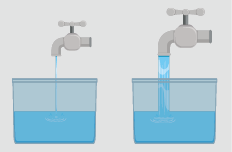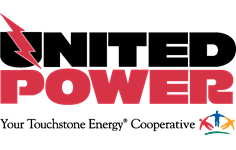Utilities throw around terms like distribution system, electric infrastructure and “the grid.” But as an electric consumer – and cooperative member – have you given much thought into how you use the electric system, and your role in maintaining that system?
Our distribution electric system, or grid, is a network of poles, wires, transformers and substations – all interconnected to deliver the power you need, when you need it. The system is carefully engineered to meet the needs of the energy consumers connected to it, while ensuring the installation, operation and maintenance is economical.
Costs to maintain the system aren’t just based on the power you buy, system infrastructure costs are also attributed to how much power you use at a given time. When you use more power at once, you’re creating a higher demand on the system. These surges in demand have a greater impact on the grid, so they cost more money.
With the traditional blended rate where the impact of demand surges is rolled up into a charge based on the power used, some members have been paying more than they should, while others aren’t paying enough. But here’s the thing: whether you use a lot of energy, a little energy, or generate your own, we all need a reliable grid to be there when we need it.
By separating demand and energy components on your bill, we are more fairly distributing these costs to members based on how they use power. Each member will now pay their fair share of the cooperative distribution system they rely on.
If you want more information on how you use power, login to the Power Portal to view your usage and demand trends. Visit www.unitedpower.com/powerportal to begin. Find your high demand periods, think back to what was running in your home, and then stagger those appliances moving forward. The grid, and your wallet, will thank you.
If you have additional questions about the demand rate and how it will impact you, email unitednewsline@unitedpower.com.
Demand for Electricity is like Demand for Water
 You can fill the same 5-gallon bucket with either a garden hose, or a fire hose. A garden hose will not fill as quickly – but the hose costs less to operate, and the impact on the water system is minimal. Fill that same bucket with a fire hose, and it will fill up very quickly, but the surge of water from a fire hose requires larger pipes and a more expensive hose. In the end, both buckets would be full with the same amount of water, but filling a bucket more slowly – smoothing the water use over time – creates less demand on the system and costs less to do.
You can fill the same 5-gallon bucket with either a garden hose, or a fire hose. A garden hose will not fill as quickly – but the hose costs less to operate, and the impact on the water system is minimal. Fill that same bucket with a fire hose, and it will fill up very quickly, but the surge of water from a fire hose requires larger pipes and a more expensive hose. In the end, both buckets would be full with the same amount of water, but filling a bucket more slowly – smoothing the water use over time – creates less demand on the system and costs less to do.

